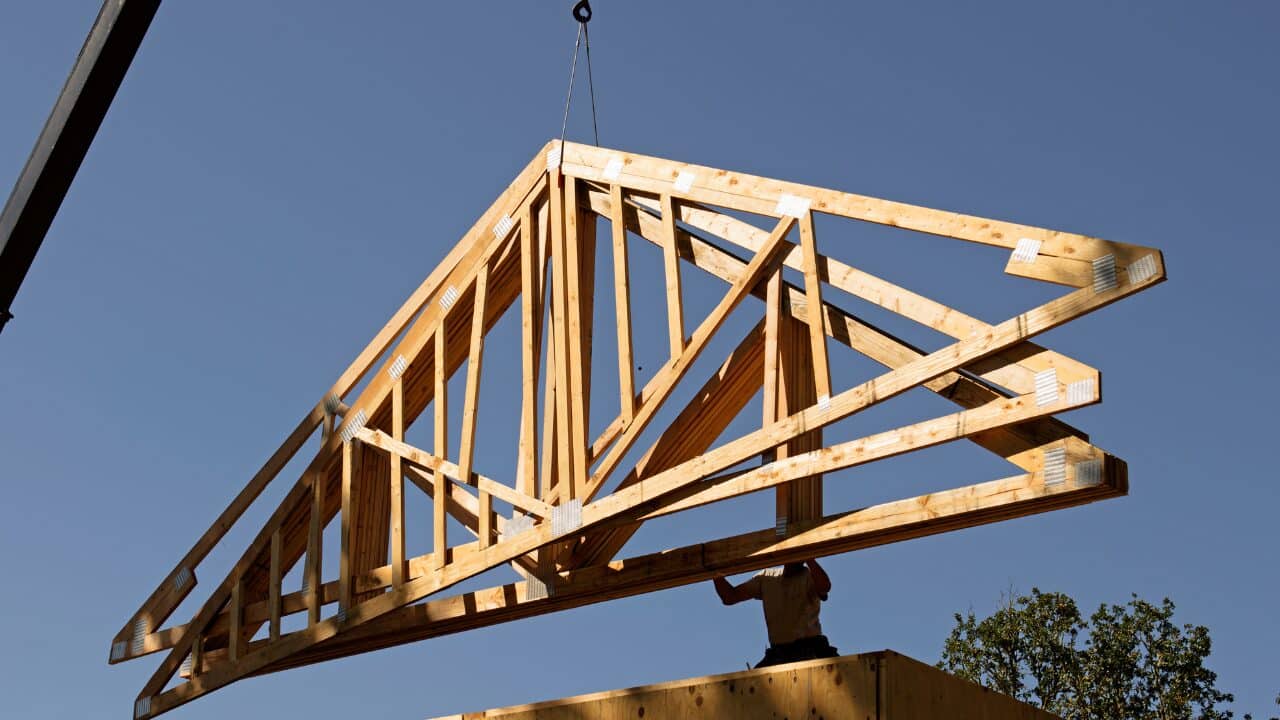The sound of a dripping tap is annoying, but there’s another kind of dripping that strikes fear into the heart of every homeowner. and that’s finding evidence of a leaking roof.
It may start as a trickle down the inside of an exterior wall or a puddle appearing where no puddle should be, but the one thing to know when your roof is leaking is that it isn’t going to get better on its own. It will only get worse and could lead to unhealthy mold growth in your home.
A roof replacement is one of the most expensive costs associated with home maintenance, so it pays to know what’s causing your roof leak and what you can do about it.
Read on to explore the common causes of a leak and the possible solutions.
Table of Contents
Holes in Your Roof
This is the most obvious reason and one of the most common causes of a leak. A roof with a hole in it is about as effective at stopping water as a sieve.
Roofs develop holes from poor maintenance or if a heavy object, like a tree branch, strikes them with considerable force. You may also end up with a hole in your roof if you remove an antenna or satellite dish, leaving a hole where the object was anchored.
Regular roof maintenance and roof inspections are the best ways to prevent and combat holes before they become a serious issue.
Damaged or Missing Shingles
Shingles are your main defense against moisture entering your home. They protect you from all kinds of precipitation and guide moisture off the roof and into your gutters.
Incorrectly installed shingles made from substandard materials may leak from the start, but the most common cause of issues with your shingles is weather damage.
Storms, wind, and hail may damage or loosen shingles or cause heavy branches to fall on your roof and damage the shingles. Extremely heavy winds may blow them straight off your roof.
It’s imperative to inspect your roof periodically for shingle damage, especially after severe weather incidents.
Gutter Problems Can Cause a Roof Leak
The purpose of your roof gutters is to channel water safely away from your home. They can’t do their job when they’re blocked by debris like leaves and sticks.
Unless you clean your gutters regularly, this matter can build up and completely block the flow of water. With nowhere else to go, water will build up on your roof and seep under your shingles into your home.
You must clean your gutters at least three times a year. Be sure to check them after heavy winds and keep trees trimmed so they don’t drop branches and leaves onto your roof.
Damage to Flashing
Roofers install metal flashing over roof joints and seams and around chimneys to prevent leaks at these weak points. Incorrectly installed flashing can also be a source of leaks.
If it’s not attached properly, it could move out of position, exposing your interiors to moisture.
Over time, weather conditions can damage your flashing. It could crack or corrode, creating an entry point for moisture.
Chimneys, Vents, and Skylights
Vents, skylights, and chimneys add ease and appeal to your home, but they can also become a source of leaks if they’re not installed properly. Incorrect installation may leave gaps where they join the roof, and water can make its way into your home via these spaces.
If your skylight is too small for the hole it’s installed in, water will make its way through the gap. The insulation around your skylight may also deteriorate as time passes, creating an inlet for moisture.
When properly installed, these features should be tightly sealed to prevent water infiltration. You should inspect them regularly to see if they need resealing.
A cracked or damaged skylight, vent, or chimney is also a source of leaks. Damaged or missing mortar is one of the most common causes of chimney leaks.
Attic Condensation Can Cause Leaks
Poor ventilation leads to condensation building up between your ceiling and your roof. Extreme temperature changes can make this phenomenon even worse.
Eventually, this moisture buildup will leak down into your home, and it can also lead to the growth of mold and mildew in your roof space.
A roof inspector can advise you on whether your roof leak originates from your roof or your attic space.
Your Roof’s Slope
The greater the angle of your roof’s slope, the more efficiently it will channel water toward your gutters. Low-slope roofs are more prone to leaks because water can easily pool up on the roofing material and ultimately leak into your home.
Old Roofs are Prone to Leaks
Metal, slate, and tile roofs may last up to 50 years, and asphalt shingles can last up to 30 years if you maintain them well.
There are a few other factors that can affect how well your roof ages. Material quality, the skill of the installation, and even the color of your roof can affect its lifespan.
As your roof ages, it will become brittle and deteriorate. Poor maintenance and neglect will only speed up this process.
If your roof is nearing its expiration date, get in touch with a skilled roof installer.
They can best advise you about whether it’s time for a roof replacement. You can only go about repairing a roof so many times before this becomes a pointless exercise.
Your Home Is Your Pride and Joy
Not only will roof leaks cause discomfort and inconvenience in your life, but roof problems will also detract from the value of your home.
If you’ve noticed a roof leak, don’t try to repair it yourself. Fixing a roof is best left to the experts.
You could do more harm than good, and it’s dangerous to climb onto your roof without the correct safety gear or training.
Would you like some more advice and information about keeping your home at its best? Browse our website, or bookmark our site and check back for the latest updates.





